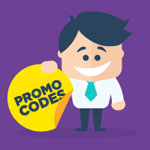
I couldn’t believe what I was seeing.
I sat dumbfounded as the car salesman (of all people) sat on the floor and carefully crafted a Lego spaceship with my kids. And I thought, “Wow.”
Literally, that’s the word that went through my mind. “Wow.”
I had decided I needed a second car to make life a little easier on my growing family. So after looking online, I found an older car with lower mileage, and before I knew it, I was getting ready to sign papers in front of a salesperson’s desk.
My past experience told me that buying a car is a lot like a trip to the DMV - hours of slow torture. But the salesman in front of me noticed my wife and I had our kids with us. He told us about his own.
Then he surprised us all.
Out from under his desk, he pulled out a large box of Legos. And he took my children to a waiting area where they could play to their heart’s content.
A few minutes later, while paperwork was being approved, he came into the waiting area where we were, he sat down on the floor, and he began building Legos with our kids.
And though I’ve experienced some very good salespeople in the past, not one had ever played Legos with my kids. And that’s why I thought, “Wow.”
And that’s why I would go back and buy from them again.
And that’s why I would recommend the dealership to my friends.
Creating a “wow” factor for your customers should constantly stay on your radar whether you work alone or you oversee a staff. Unfortunately, our radar field is often crowded with thoughts of our future customers (advertisements, product listings, keyword ranking) so that our past and current customers can become small objects in our rearview mirror.
But the truth is that our past customers are often the key component to obtaining future customers. Every investment into helping our past customers is a seed that will potentially reap a harvest of future customers.

The great news is that regardless of the size of your business, you can start RIGHT NOW. Here are five immediate actions you can take today to wow your customers.
-
Drop the corporate lingo
Right now, think through your email sequence or whatever customer correspondence you’re using. Does it sound exactly like an email you’d receive from one of the “big box” stores? Are you using sales jargon that simply mimics what you’ve seen in every other sales email?
If your email becomes too generic, your customer can feel generic as well - like a number generated on the page. And if your correspondence is filled with trite sales speech, you create the impression that your company is a large machine on autopilot who is unaware of their customer’s needs.

Consider the following example. Hubert just ordered a new microphone for his podcast from an Amazon seller. Here’s the follow-up email he received from the company.

You can almost hear a robot-generated voice reading it, can’t you? Did you notice all of the trite business phrases?
- “valued customer”
- “appreciate your business”
- “serving you”
- “questions or concerns”
- Even their tagline is a cliche: “offering quality products”.
Now imagine if Spoken Word decided to drop the salespeak and just be themselves in their correspondence? What if their correspondence looked more like this:

Notice how Spoken Word is now using a different voice? That’s because it decided it was done with sales talk and realized people just want to hear the real them.
Now just a note before we move on. When we say you should lose sales talk, we don’t mean you should lose professionalism. Be sure your sincerity is written out appropriately, otherwise your correspondence will look like it’s written by a 10 year old. Use appropriate spelling and punctuation, and don’t use inappropriate humor or language. Your correspondence should strengthen your customer’s confidence in your brand, not undermine it.
2. Find connection points
Connecting with customers is so much more difficult in online sales. It’s not like you can walk up and shake their hand, offer a smile, and invade their personal space.
So when connection points occur between you and your customers, you have to take advantage of every. single. one.
One great connection point occurs when a customer contacts you with a question or concern. They’re not only allowing you to reach out to them. They’re asking you to!
In every customer initiated correspondence, reply to the customer, not just the question. In doing so, you may just find a connection point.

So when Sarah from Alaska writes K9 Companion to ask about dosage amounts for her Pekingese, Cocoa, K9 Companion could respond:

Notice that Craig made three connection points while answering Sarah’s question - (1) Her dog’s name. (2) Her dog’s breed. (3) Her location.
Now you don’t want to come across creepy. If Craig had mentioned that his ex-wife’s name was Sarah, too, he would have lost a customer and gained a restraining order. So keep the connection point brief and possibly only one per email.
Responding to specifics in customer initiated correspondence will make a huge impression on your customers.
3. Refund and Discount Generously
This step is really self-explanatory, but let me offer some quick clarifications just in case some may object.
First, I am not referring to refunds for damaged goods or unsatisfied customers. I’m advising to offer a full refund to customers who aren’t asking for one but were inconvenienced in some way. Here are a few examples of inconveniences for which you may want to offer full refunds:
- Shipping was delayed for an extended amount of time.
- The packaging was crushed upon arrival even though the product was not.
- The item itself works but was slightly damaged upon arrival.
- The item worked but looked differently than the customer expected.
And there are many other reasons left to your discretion that you may wish to simply extend a hand of generosity and offer a full refund.
Secondly, some sellers may feel that handing out full refunds will eventually sink their business. I don’t think so. By offering a full refund to an inconvenienced customer, you are exploding the likelihood that they’ll buy from you again. And you never know if their experience will be shared with their friends or by way of an Amazon review. Also, very few customers (if any) are going to use your refund policy to simply get free products.

However, if you are uncomfortable with offering a full refund, you should at least be quick to offer an inconvenienced customer a discount on their current or future product.
Any customer who receives a refund or discount simply for their inconvenience will be “wowed” that a company actually cared about their buying experience.
4. Make it personal
The rapid growth of online sales necessitates the reduction of face-to-face transactions. This can, of course, increase the efficiency of buying and selling, but it obviously can lead to the depersonalization of the marketplace. People are auto-generated numbers, companies are faceless logos, and correspondence is sent by way of pushing buttons on a keyboard.
Which is why customers can be amazed by any kind of personalized communication between them and a company. Which of the following could you do today or within the next week?
- Phone calls to recent customers just to check on their customer experience.
- A handwritten note to say thank you for purchases or for a great, online review.
- A personal visit to a specifically loyal customer to deliver a gift and say thank you.
One company owner actually found customers near his holiday vacation spot and made personal visits to their homes to drop off a gift. Now that’s a “wow” factor.
Now you can’t write every customer a handwritten note, but you by sprinkling personalization over your customer base, the effect will spread. A personal contact between you and a single customer could take as little as five minutes. But those five minutes may be worth 10 future customers when you deliver the “wow” factor.

5. Give ‘em more
When I showed up to purchase my second car, I had expectations. I expected the car to be in good condition. I expected the salesperson to be honest. I expected the process to be long. I expected my kids to whine a lot.
But I never thought, “I hope the salesperson has Legos under his desk,” or “I hope the salesman will play with my children while we’re there.”
But he did. And that’s why I was wowed.
Consider what your customer expects. They expect the product to be in good condition. They expect you to reply to any questions they may have. They expect you to refund them if the product is damaged. And for most customers, that’s where their expectations end.
But what if you offered more? What if you became not just a source for their product but a source of education or humor or a community network of people who have shared interests?

Consider offering the following as a “bonus” to your customers that they didn’t know about until they’ve purchased your product.
- A weekly or monthly newsletter that educates them on a topic relevant to your product.
- Access to your blog where you regularly update customers on the latest in technology.
- An invitation to a Facebook group where customers can interact with one another, share pictures, or simply stay connected.
- A free e-guide or ebook published by your company that offers valuable information.
- A free ticket to an upcoming event you are sponsoring or hosting.
Notice that none of the above items cost you more money. They simply take time to create. But by offering something your customer wasn’t expecting, you’ve increased the “wow” factor in your customer experience.
Conclusion
I still don’t know why the salesman had a box of Legos under his desk. Maybe they were his kids’ Legos. Maybe his past experience with customer’s children caused him to stock up. But regardless of why, he was ready to “wow” us with his service.
Right now, choose one or two of the above suggestions and take action. The seeds of customer satisfaction you plant today will grow up to be paying customers in the future.
Look under your sales desk. Are you ready to “wow” them?







